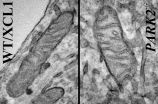(Press-News.org) A new model for HIV progression finds that it spreads in a similar way to some computer worms and predicts that early treatment is key to staving off AIDS.
HIV specialists and network security experts at UCL noticed that the spread of HIV through the body using two methods - via the bloodstream and directly between cells - was similar to how some computer worms spread through both the internet and local networks respectively to infect as many computers as possible. They worked together to create a model for this 'hybrid spreading', which accurately predicted patients' progression from HIV to AIDS in a major clinical trial.
Detailed sample data from 17 HIV patients from London were used to verify the model, showing that hybrid spreading provides the best explanation for HIV progression and highlighting the benefits of early treatment.
HIV infects CD4+ T-cells, which play a vital role in the immune system and protect us from diseases. As HIV progresses, it reduces the number of active T-cells in the body until the immune system cannot function correctly, a state known as 'acquired immune deficiency syndrome' or AIDS.
Current World Health Organisation guidelines, which the UK government follows, recommend only beginning HIV treatment when the number of T-cells in the bloodstream falls below a certain level. However, the new model predicts that treatment should start as soon as possible after infection to prevent AIDS from developing in the long term.
"The number of HIV cells in the bloodstream is always relatively low, and our model shows that HIV spread through the bloodstream alone would not be enough to cause AIDS," explains co-senior author Professor Benny Chain (UCL Infection & Immunity). "It is likely that when HIV gains a foothold somewhere with a high T-cell population, such as the gut, it uses a cell-to-cell transfer mechanism to efficiently spread directly between them. As such, if HIV has already spread to an area rich in T-cells by the time treatment begins, preventing its spread through the bloodstream will not stop AIDS. Our model suggests that completely blocking cell-to-cell transfer would prevent progression to AIDS, highlighting the need to develop new treatments."
The model was inspired by similarities between HIV and computer worms such as the highly damaging 'Conficker' worm, first detected in 2008, which has infected military and police computer networks across Europe and is still active today.
"HIV and Conficker have a lot in common," says lead author Changwang Zhang (UCL Computer Science). "They both use hybrid spreading mechanisms, persist for a very long time and are incredibly difficult to eradicate. Our model enables us to explain these important properties and to predict the infection process."
Changwang's supervisor, co-author Dr Shi Zhou (UCL Computer Science) says: "Although the cybersecurity community organised an unprecedented collaboration to tackle Conficker, they still failed to eliminate Conficker from the Internet. HIV researchers face a similar problem. We hope that our new understanding of hybrid epidemics will help us to fight against Conficker and HIV."
Laboratory research led by co-senior author Dr Clare Jolly (UCL Infection & Immunity) has previously shown that some drugs are better than others at stopping HIV from spreading directly between cells. However, it is not possible to directly measure cell-to-cell spread in patients because it takes place inside internal organs.
"With this new model, we should be able to assess the effectiveness of drugs against different modes of HIV spread in real patients," explains Dr Jolly. "This could prove invaluable when interpreting the results of drug trials to understand what works and why. Using computer models to understand processes that we cannot directly observe is common in the physical sciences and supports many fundamental theories. Our model provides strong evidence that cell-to-cell spread is an important part of HIV spread, and we hope to show this directly in future animal studies."
INFORMATION:
CAMBRIDGE, Mass. (April 2, 2015) - A team of Whitehead Institute scientists has discovered that during division, stem cells distinguish between old and young mitochondria and allocate them disproportionately between daughter cells. As a result, the daughter cell destined to remain a stem cell receives predominantly young mitochondria, while the cell meant to differentiate into another cell type carries with it a higher compliment of the aged organelles.
This asymmetric apportioning of cellular contents may represent a mechanism through which stem cells prevent the accumulation ...
Characteristics passed between generations are not decided solely by DNA, but can be brought about by other material in cells, new research shows.
Scientists studied proteins found in cells, known as histones, which are not part of the genetic code, but act as spools around which DNA is wound. Histones are known to control whether or not genes are switched on.
Researchers found that naturally occurring changes to these proteins, which affect how they control genes, can be sustained from one generation to the next and so influence which traits are passed on.
The finding ...
Variations in the color of grapevine berries within the Pinot family result from naturally-occurring genetic mutations that selectively shut down the genes responsible for the synthesis of red pigments, called anthocyanins. This has led to the emergence of Pinot blanc and Pinot gris from Pinot noir. Frédérique Pelsy and her colleagues, from the "Grapevine Health and Wine Quality" research unit at INRA Colmar, France, published these findings in PLOS Genetics on 2 April 2015.
The vine stocks used in viticulture are obtained by grafting; therefore, for any given ...
Infants have innate knowledge about the world and when their expectations are defied, they learn best, researchers at Johns Hopkins University found.
In a paper to be published April 3 in the journal Science, cognitive psychologists Aimee E. Stahl and Lisa Feigenson demonstrate for the first time that babies learn new things by leveraging the core information they are born with. When something surprises a baby, like an object not behaving the way a baby expects it to, the baby not only focuses on that object, but ultimately learns more about it than from a similar yet ...
French physicist Jean Charles Athanase Peltier discovered a key concept necessary for thermoelectric (TE) temperature control in 1834. His findings were so significant, TE devices are now commonly referred to Peltier devices. Since his work, there have been steady advancements in materials and design. Despite the technological sophistication Peltier devices, they are still less energy efficient than traditional compressor/evaporation cooling.
In the 1960's, Peltier devices were primarily made from Bismuth-Telluride (Bi2Te3) or Antimony-Telluride (Sb2Te3) alloys and ...
MIAMI - A first-of-its-kind study observed how oil droplets are formed and measured their size under high pressure. They further simulated how the atomized oil spewing from the Macondo well reached the ocean's surface during the Deepwater Horizon accident. The findings from the University of Miami (UM) Rosenstiel School of Marine and Atmospheric Science and University of Western Australia research team suggest that the physical properties in deep water create a natural dispersion mechanism for oil droplets that generates a similar effect to the application of chemical ...
Binge-drinking during adolescence may perturb brain development at a critical time and leave lasting effects on genes and behavior that persist into adulthood.
The findings, by researchers at the University of Illinois at Chicago College of Medicine using an animal model, are reported online in the journal Neurobiology of Disease.
"This may be the mechanism through which adolescent binge-drinking increases the risk for psychiatric disorders, including alcoholism, in adulthood," says lead author Subhash Pandey, professor of psychiatry and director of neuroscience alcoholism ...
Irvine, Calif. -- A newly developed website provides parents and children with individualized information and support -- based on factors like coping style and levels of worry and fear -- to help lower anxiety before outpatient surgery in children, according to a pair of articles in the April issue of Anesthesia & Analgesia.
The papers report on the development of the "Web-based Tailored Intervention Preparation for Surgery" (WebTIPS) project, which provides information and strategies to help children and parents prepare for surgery and anesthesia. A preliminary evaluation ...
Based on research in fruit flies, it has long been suspected that the most common mutation linked to both sporadic and familial Parkinson's disease (PD) wreaks its havoc by altering the function of mitochondria in neurons that produce the neurotransmitter dopamine. Using stem cells derived from patients who have PD, scientist at the Buck Institute have confirmed that finding in human cells for the first time. In research published in the April 2nd early online edition of Stem Cell Reports, Buck researchers also provide a valuable tool for testing potential treatments ...
BOSTON -- Pseudogenes, a sub-class of long non-coding RNA (lncRNA) that developed from the genome's 20,000 protein-coding genes but lost the ability to produce proteins, have long been considered nothing more than genomic "junk." Yet the retention of these 20,000 mysterious remnants during evolution has suggested that they may in fact possess biological functions and contribute to the development of disease.
Now, a team led by investigators in the Cancer Research Institute at Beth Israel Deaconess Medical Center (BIDMC) has provided some of the first evidence that one ...


